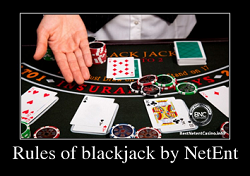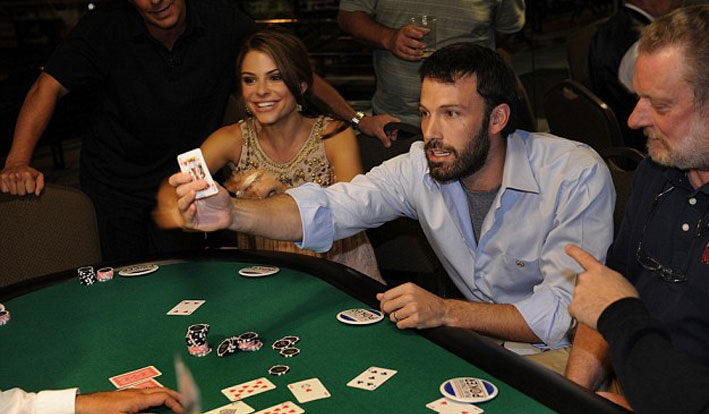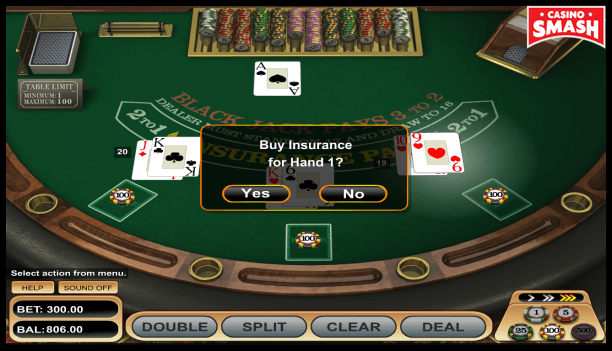Split 3s Blackjack
Always Split Aces & 8’s – this is the main rule to remember. When it comes to the cards you should never Split, those are 10s and 5s. For other pairs, it’s not that simple as it also depends on the card the dealer has. For instance, it’s a general consensus that you should Split 2s, 3s. Splitting in Blackjack is explained in detail including why one should not split 10s and why resplitting is a powerful tool. Always split aces and 8s, never splits 10s, never split 5s, always split 2s or 3s but only when the dealer has a 4, a 5, a 6 or a 7; always split 6s when the dealer is showing a 3, a 4, a 5, or a 6; always split 7s. Common Blackjack Split Rules Allowed to split twice (up to three hands). You can split non identical 10 value cards. Splits Aces cannot be re-split.
Allstar Gambling USA / Guides /Long one of the world’s most popular card games blackjack is a game of both skill and chance. Learning blackjack basic strategy can dramatically reduce the house edge and increase your odds of winning one of the most fun and exciting casino games around.
Blackjack has long been one of the most popular casino games in the world. Dating back to France in the early 1700s, today this elegant game of both luck and skill can be found in every major casino, whether land-based or online, in the world. The draw of blackjack lies not only in its simplicity but also in the fact that mathematicians have shown us that it is a game in which you can actually beat the house if you are persistent and diligent enough in applying basic blackjack strategy.
In this article, we’ll provide you with some insights of the basic blackjack strategy you need to know to be able to have a ton of fun, beat the house, and walk away from a winner.
What is the house edge?
First off, let’s talk about the house edge. As you know, all casino games have a house edge that gives the casino an inherent advantage and keeps them in business. It doesn’t matter whether you’re playing in Las Vegas, Atlantic City, Macau or at your favorite online casino, the house edge is always there in every game you play. Games like Keno, with a house edge ranging from 25%-29% or Casino War, with a house edge for a tie bet at 18.65%, are some of the worst casino games to play as they have the highest house edge.
Classic and Live Dealer Blackjack, on the other hand, with the dealer standing on a soft 17, has a house edge of just 0.28% when played using blackjack basic strategy. Obviously, that’s a huge difference in your favor as long as you effectively use basic blackjack strategy and one of the things that have helped blackjack keep its place as the world’s most popular casino card game throughout the ages. The key to successful blackjack play, enhancing your fun and your bankroll, is knowing when to stand, hit, split, double down or surrender.
Join MyBookie now! The NO-nonsense USA gambling site!Bonus:150% up to $750
Play Now
When to hit or stand
While famous card counters like the MIT team, Edward Thorp or Ken Uston popularized the notion that you could get seriously rich playing blackjack properly as long as you were a mathematical whizz kid, you don’t have to be a maths genius to employ blackjack basic strategy and dramatically increase your chances of walking away from the table a winner.
When it comes to basic blackjack strategy, it all starts with knowing when to hit or stand. There are two main types of hands in blackjack, hard and soft. Hard hands refer to the possibility that the player or dealer will go bust (go over 21) on the next hit. A soft hand is one in which the player or dealer has an ace that counts as 11 instead of 1.
The rules regarding when to stand or hit, then, are as follows:
- If the dealer has a 4-6 and you have a hard 12 – always stand
- If the dealer has a 2-6 and you have a hard 13-16 – always stand
- If you have a hard 17 – always stand
- If you have a soft 19 or more – always stand
- If you have a soft 18 – always stand, unless the dealer has a 9, 10 or ace, then hit
- Always hit on a soft 17 or less
- Always hit on a hard 11 or less
Blackjack Splitting Pairs - Casino News Daily
When to split in Blackjack
When it comes to basic blackjack strategy, knowing when to split is also an essential skill. In almost all versions of blackjack, you’ll be given the option to split your hand into two separate hands if you’re dealt a pair. You double your bet but are now playing two hands (or possibly more, as some versions of blackjack will give you the option to re-split if you’re dealt another pair) against the dealer. The rules regarding when to split are as follows:
- Always split aces
- Always split 8s
- Always re-split the above if given the chance
- Never split 10s
- Never split 5s
- Never split 4s
- Only split 2s, 3s or 7s if the dealer has a 7 or lower
- Only split 6s if the dealer has 2-6
When to double down in Blackjack
Doubling down in Blackjack is the opportunity to double your initial bet after you have seen your first two cards but limits you to only one additional card after your bet. Statistically speaking, as each deck of cards in blackjack holds 16 cards that equal 10, if the two cards you are dealt first equal 10 or 11, doubling down is your best bet to maximize your possible winnings.
Experts also say that if the dealer is showing a 5 or a 6, also known as “bust cards”, and you hold an ace together with a 2, 3, 4, 5 or 6, doubling down is your best bet as you are more likely to be helped than hurt by the remaining cards in the deck.
When to surrender in Blackjack
Certain variations of blackjack will give you the option to surrender. This means, in the event, you’re dealt a terrible hand, you have the option to forfeit the hand and retain half your bet. The logic behind when to surrender and when not to revolves around the particular type of blackjack you are playing. i.e. whether the dealer is required to hit or stand on a soft 17.
If the dealer is required to stand on a soft 17, then it is advisable to surrender if you have 16 and the dealer has a 9, 10 or ace. However, this changes in the event you have a pair of 8s, in which case you should split instead of surrender.
If the dealer is required to hit on a soft 17, then it is advisable to surrender on a 15 or 17 if the dealer is showing an ace or if you have a pair of 8s and the dealer has an ace. If the dealer has anything else, the pair of 8s should be split.
Conclusion
Learning and effectively using blackjack basic strategy will not only dramatically alter the odds and lower the inherent house edge in your favour but allows you as the player to take ever greater control of your game, making the experience of playing one of the world’s most beloved casino card games immensely more fun, thrilling and profitable! Get into your game today and use basic blackjack strategy to turn an otherwise casual and fun game of cards into a truly winning proposition.
Join MYB Casino now! The NO-nonsense USA gambling site!Bonus:Cached
200% up to $1,000
Play NowGuides11 Legendary And Famous Blackjack PlayersAllstar GamblingDecember 4, 2020GuidesMartingale System (Blackjack Betting)Allstar GamblingOctober 22, 2020GuidesSlot Tournaments – How Do They Work and How to WinAllstar GamblingJuly 30, 2020Latest Post
Guides11 Legendary And Famous Blackjack PlayersTop 5 Casinos
Bonus:200% up to $1,000
Play NowBonus:300% up to $3,000
Play NowBonus:
500% up to $3,000
(CODE: ASGBSC)
Split 3s Blackjack Vs
100% up to $1,000
Play NowBonus:300% up to $2,000
Play NowClaim $215 in exclusive No Deposit Free chips
Sign up with AllStar Gambling for FREE to take advantage of this one-time offer! PLUS many more promotions for players from the USA based on your location and gambling preferences!
Please share your location to continue
Pairs are some of the most confusing starting hands for a novice blackjack player to handle. Most rookies memorize the correct hitting, standing, and doubling decisions for hard totals with relative ease but when it comes to pair splitting, they are utterly perplexed. The struggle is real with soft totals as well but nothing quite beats the confusion that arises when novices are dealt pairs at the blackjack table.
- Bonus$300
- Bonus$300
- Bonus⋆80 Free Spins
The sad thing is splitting originally was not an option in the earliest variations of blackjack and neither was doubling down. These two moves were introduced at a later stage of blackjack’s development for the purpose of making the game more interesting and attractive since both doubling and splitting are known to significantly reduce the casinos’ edge.
Instead of taking advantage of this fact, most unskilled players misplay their pairs which ultimately turns them into long-term losers. To prevent blackjack rookies from falling victims to their intuition, we shall tackle in further depth the optimal plays for all pairs you can possibly be dealt in blackjack, starting with the paired deuces and treys.
Optimal Plays for Paired Deuces in Single-Deck Blackjack
As is usually the case, the optimal playing decisions for paired deuces are more or less influenced by the playing conditions at a given table. There are strategy discrepancies in the correct moves for this pair which come as a result of the different number of decks the game may utilize. So let us first take a look at how you should approach a pair of deuces when you are playing against a single deck of cards.
The plays are not influenced by the playing conditions for the dealer. The only thing that bears consideration here is what upcard the dealer shows and whether or not DAS (doubling after splitting) is an option. The optimal moves with a pair of 2s in a single-deck game are to:
- split the 2s against dealer upcards 2 through 7
- hit the 2s against dealer upcards 8 through Ace
This certainly makes sense because paired deuces give you a very lousy starting total of 4. In contrast, you stand better chances of winning if you split and start two hands with a 2 which makes for a significant improvement of your odds.
Splitting the deuces is the most sensible move against a dealer who shows a card with a bad or medium value like 2 through 7. These are the most volatile cards for the dealer because they expose them to a relatively high risk of busting, something you should take advantage of by raising your bet against one such weak dealer.
Optimal Plays for Paired Deuces in Single-Deck Blackjack Additional TipsConversely, when you are facing a dealer with stronger cards, who is more likely to reach their standing total or possibly outdraw you, you must approach your paired 2s more conservatively and refrain from investing more money into this round of play.
The above strategy is applicable when you play single-deck H17 or S17 games with DAS and late surrender (LS). In the case of NDAS single-deck games, the strategy changes a little – you are recommended to hit the 2s against a dealer with a deuce instead of splitting them.

Optimal Plays for Paired Treys in Single-Deck Blackjack
A pair of treys also gives blackjack players a very bad start. In fact, when unsplit, this hand makes for an even worse starting total of 6. This certainly is a regress when compared to a total of 4. Similarly to the paired 2s, a pair of 3s requires a different strategy when you play single-deck and multiple-deck games.
DAS, or its absence thereof, also influences the correct plays for this pair against certain dealer upcards. Whether or not the game is an H17 or an S17 one is again irrelevant. The only thing that matters is what upcard your dealer exposes. Here basic strategy tells us to:
- Split a pair of 3s against dealer upcards 2 through 8
- Hit the pair of 3s against dealer upcards 9 through Ace
Again, this approach is accurate on condition the casino allows you to double after a split. Provided that you play single-deck blackjack under the NDAS rule, you should adjust your strategy a little bit. In this case, you split the 3s but only against dealer upcards 4 through 7 and hit against a 2 or a 3. The plays against dealers with strong upcards 8 through Ace remain the same.
Correct Splitting Decisions for 2s and 3s in Multiple-Deck Games
Finding a single-deck blackjack table with half-decent rules is a mean feat these days. You are more likely to end up playing 21 with multiple-decks of cards, at least if you are looking for good rules and lower house edge.
So let’s take a look for the optimal splitting decisions for paired 2s and 3s which thankfully coincide in double-deck and multiple-deck games regardless of the table conditions. The only rule variation that affects decision-making is the presence or absence of DAS. There are two logical decisions here – hitting or splitting. So here is what you must do with these two pairs in multiple-deck games that play under the DAS rule:
- Split both 2s and 3s against a dealer with 2 through 7
- Hit your 2s or 3s against a dealer with 8 through Ace
Blackjack Splitting A Pair Of 2’s Or 3’s - Outcomes And ...
But what if you are not permitted to double after you split? The discrepancies are again small and concern your moves against a dealer whose exposed card is either a deuce or a trey. In NDAS multiple-deck variations of blackjack, the correct strategy is to hit your 2s and 3s when the dealer shows a 2 or a 3. Everything else remains the same. The dealer’s standing rules have no effect on your playing decisions for these two pairs.
See Full List On Wikihow.com
Correct Splitting Decisions for 2s and 3s in Multiple-Deck Games Additional TipsYou are probably asking yourself how does this help you? The plays listed above are referred to as “optimal” because it is mathematically established they help you achieve several things with these two pairs – increase your average profits, reduce your average losses, and improve your bad starting totals.
When To Split Cards In Blackjack BlackjackTips
These plays may not appear to work in the short term. Sometimes it would feel like you are losing split 2s or 3s time and again despite following basic strategy to the tee. But you will inevitably notice these moves have a positive effect on your bankroll after you go through thousands of hands. Until then, the only thing you can do is trust the math and make the optimal playing decisions for your paired deuces and treys.